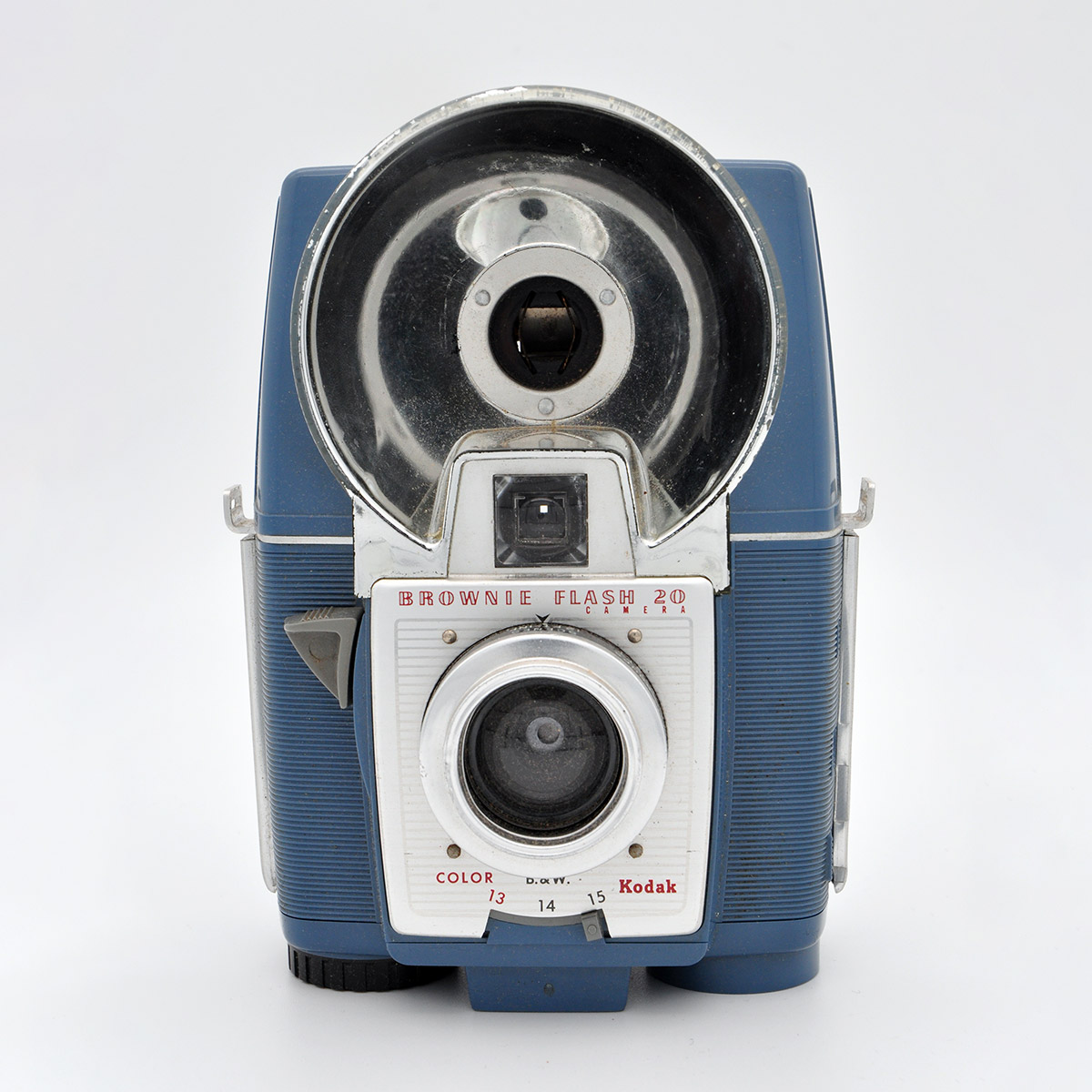Kodak Brownie Flash 20
I love the 1950s design of this camera, which is dominated by an enormous built in flash reflector. With its retro look, the Brownie Flash 20 appeals to both camera collectors and those in search of fashionable 50s memorabilia, so the prices tend to be a little higher than for similar less glamorous models. I found mine in an “Antiques Centre” (aka junk shop) in Norwich and paid £12 for it, complete with a cream coloured faux-leather case.
As post-war austerity faded away, and colour photography became more affordable, the market for simple but reasonable quality cameras really took off. Manufacturers were keen to introduce “idiot proof” features to reduce the chances of disappointing results, which in turn might lead to the cameras being consigned to the back of the wardrobe, and more importantly, the lucrative film sales stalling.
So while in essence, this is an eye-level box camera, it does have a few minor sophistications that raise it above the minimum. There are three apertures, and three focus zones, together with a wind on system which doesn’t require you to use the red window, other than to advance the film to the first frame. I’ve always found the red window system pretty foolproof, but Kodak came up with a means whereby all you had to do was keep turning the wind on wheel until it stopped, thus avoiding the need to squint at the little numbers on the backing paper. This is a feature normally associated with higher end cameras such as the Rolleiflexes, and I was surprised to find it on this cheap and cheerful model.
An immediate obstacle to overcome if you want to use one of these, is that like many Kodak cameras of that era, it uses 620 film, this is identical to 120 film, which is still widely available today, but uses a slimmer spool. The vast majority of 620 cameras will not accept 120 spools, so some way has to be found to get around this. The cheapest solution is to re-roll a film yourself, or failing that, re-spooled film can be found online. Any original 620 film you might come across is likely to be very much past its best, as it was last made in 1995. I opted for the DIY route, using some recently expired and cheap Fuji slide film.
I’m not a fan of flash photography, which is a shame really, as the flash reflector is what gives this camera it’s striking appearance. I was tempted to have a go anyway, but the cost of the esoteric 22.5v battery required to fire the flashbulb put me off, so I opted to stick with natural light, though having decided to cross-process my film, there would be nothing particularly natural about the colour rendition.
Where possible, I try to match the subject to the camera, and so Professor Jon’s Flea Circus, a faithful rendering of a 1950s fairground side show, was a lucky find. Billed as the smallest circus in the world, I can thoroughly recommend his showmanship, guaranteed to leave you itching for more.
But don’t worry about his unhealthy looking skin tone, this results from using slide film cross-processed in negative chemistry, it’s not due to an unpleasant flea-borne disease!


